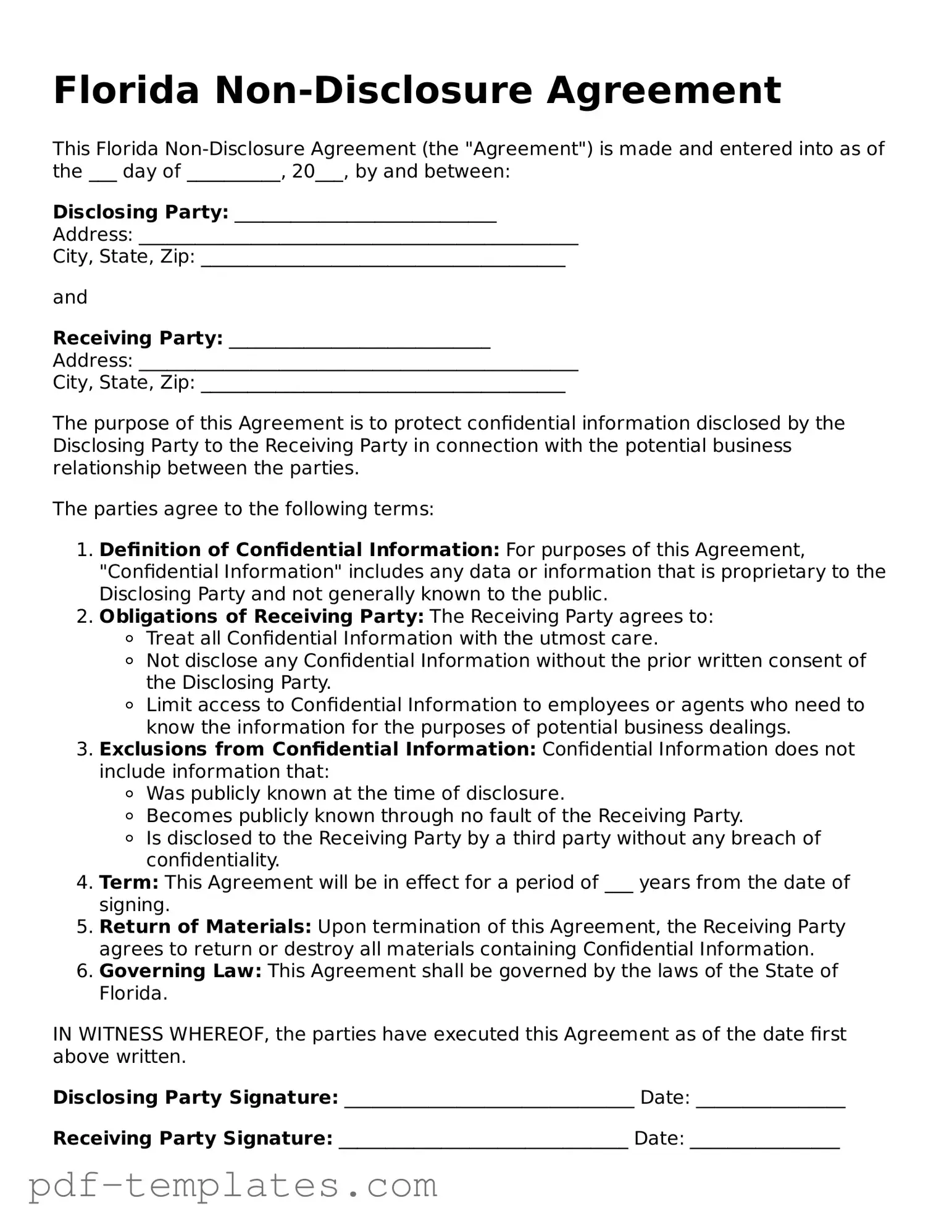In the vibrant landscape of business interactions, safeguarding sensitive information is paramount, particularly in a state as dynamic as Florida. The Florida Non-disclosure Agreement (NDA) serves as a vital tool for individuals and organizations looking to protect their proprietary information from unauthorized disclosure. This legal document outlines the obligations of the parties involved, ensuring that confidential information shared during negotiations, collaborations, or employment remains protected. Key components of the NDA include definitions of what constitutes confidential information, the duration of the confidentiality obligation, and the specific circumstances under which information may be disclosed. Furthermore, the agreement often includes clauses that address the consequences of breaching the terms, offering a clear framework for accountability. By utilizing this form, parties can foster trust and encourage open communication, all while maintaining the integrity of their valuable intellectual property. Understanding the nuances of the Florida Non-disclosure Agreement is essential for anyone looking to navigate the complexities of business relationships in this region.
